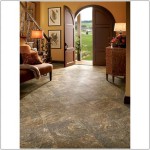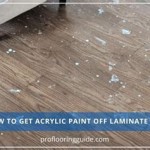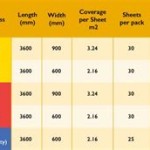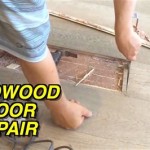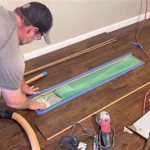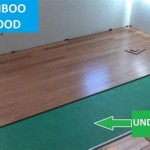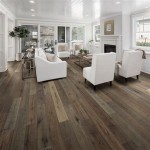Will Double-Sided Carpet Tape Damage Hardwood Floors?
Double-sided carpet tape is a common adhesive product used to secure rugs, carpets, and mats to flooring surfaces. Its appeal lies in its ease of use and perceived ability to prevent slipping and movement. However, the question of whether double-sided carpet tape is suitable for hardwood floors remains a subject of debate. Understanding the potential risks and benefits is crucial before applying this product to a valuable hardwood surface.
Hardwood floors are valued for their beauty, durability, and longevity. They are often a significant investment in a home, and maintaining their pristine condition is a priority for homeowners. The use of any adhesive product, including double-sided carpet tape, introduces the potential for damage, affecting the floor's aesthetic and structural integrity. The nature of the tape's adhesive, the type of hardwood finish, and the duration of application all contribute to the likelihood and severity of potential damage.
The primary concern with double-sided carpet tape is its potential to damage the finish or even the wood itself when removed. The adhesive can bond strongly to the finish, and attempting to peel it off can result in the finish being pulled away, leaving behind a sticky residue. In more severe cases, the adhesive can permeate into the wood grain, making removal even more difficult and potentially requiring professional refinishing. Furthermore, certain types of hardwood floors, especially those with softer woods or aged finishes, are more susceptible to damage from aggressive adhesives.
Before applying any double-sided carpet tape to hardwood floors, it is vital to conduct a thorough assessment of the floor's condition and to understand the risks involved. Careful consideration of alternative methods for securing rugs and carpets is also warranted. This article will examine the factors that contribute to the potential for damage, discuss different types of double-sided carpet tape and their properties, and offer preventative measures and alternative solutions for securing rugs and carpets on hardwood floors.
Understanding the Adhesive Properties of Double-Sided Carpet Tape
The adhesive used in double-sided carpet tape is a critical factor in determining its potential impact on hardwood floors. Different types of adhesives possess varying levels of strength, tackiness, and chemical composition. Some adhesives are designed for temporary use and are formulated to be easily removable, while others are intended for more permanent applications and feature a stronger, more durable bond. Understanding the specific properties of the adhesive is crucial in assessing the risk of damage to the floor.
Many double-sided carpet tapes utilize acrylic-based adhesives. Acrylic adhesives generally offer good adhesion and decent resistance to environmental factors like temperature and humidity. However, some acrylic adhesives can leave behind a residue upon removal, especially if left in place for an extended period. The residue can be difficult to remove and may require specialized cleaning solutions. The strength of the bond between the acrylic adhesive and the hardwood finish also influences the potential for damage during removal.
Rubber-based adhesives are another common type used in double-sided carpet tapes. These adhesives tend to have a higher initial tack and can create a stronger bond compared to acrylic adhesives. While this might seem advantageous for securing rugs firmly, the increased bond strength also increases the risk of damage to the hardwood floor. Removing rubber-based adhesive can be particularly challenging, often resulting in the finish being pulled off or a sticky residue remaining. The aggressive nature of rubber-based adhesives makes them less suitable for use on delicate or older hardwood floors.
Furthermore, the quality of the adhesive can vary significantly between different brands and products. Cheaper tapes may use inferior adhesives that degrade over time, becoming more difficult to remove and potentially staining or discoloring the hardwood finish. It is important to research and select a reputable brand known for producing high-quality, floor-friendly adhesives, if the decision is made to use tape at all. Reading product reviews and consulting with flooring professionals can provide valuable insights into the adhesive properties of specific tapes.
The duration of time the tape remains on the floor also plays a significant role. The longer the tape is in place, the stronger the bond becomes, and the more difficult it is to remove without damaging the finish. Prolonged exposure to sunlight and temperature fluctuations can also affect the adhesive, causing it to harden and become more brittle. Regularly checking the tape and removing it periodically can help minimize the risk of permanent damage.
Factors Increasing the Risk of Damage to Hardwood Floors
Several factors can increase the likelihood and severity of damage to hardwood floors from double-sided carpet tape. These factors include the type of wood, the finish applied, the age and condition of the floor, and environmental conditions. Understanding these risks allows for a more informed decision about whether to use carpet tape and, if so, how to minimize potential harm.
The type of wood used in the flooring is a primary consideration. Softer woods, such as pine and fir, are more susceptible to scratching and denting than harder woods like oak and maple. The softer grain structure of these woods also makes them more prone to absorbing adhesive residue, making removal more difficult. Using carpet tape on softwood floors carries a higher risk of damage compared to using it on hardwood floors.
The type of finish applied to the hardwood floor also significantly affects its vulnerability to damage. Surface finishes, such as polyurethane, create a protective layer over the wood, offering some resistance to scratches and stains. However, even durable finishes can be damaged by aggressive adhesives. Penetrating oil finishes, on the other hand, soak into the wood fibers, providing less surface protection. Floors with oil-based finishes are generally more susceptible to damage from adhesives, as the adhesive can more easily penetrate the wood.
The age and condition of the hardwood floor are also critical factors. Older floors often have worn or damaged finishes, making them more vulnerable to adhesive damage. The finish may be peeling or cracking, providing pathways for the adhesive to penetrate the wood. Similarly, floors that have been improperly maintained or exposed to excessive moisture or sunlight may be more prone to damage. Before applying any carpet tape, it is crucial to assess the overall condition of the floor and address any existing issues.
Environmental conditions, such as temperature and humidity, can also affect the adhesive properties of carpet tape. High temperatures can cause the adhesive to soften and become more sticky, increasing its bond strength and making it more difficult to remove. High humidity can also weaken the adhesive over time, but might also cause a different reaction where the adhesive bonds even firmlier. Fluctuations in temperature and humidity can cause the wood to expand and contract, potentially weakening the bond between the finish and the wood, making it more susceptible to damage during tape removal.
Preventative Measures and Alternative Solutions
While double-sided carpet tape may seem like a convenient solution for securing rugs and carpets, there are several preventative measures and alternative solutions that can minimize the risk of damage to hardwood floors. Exploring these options can help homeowners achieve the desired results without compromising the integrity and beauty of their floors.
One preventative measure is to use a low-tack or residue-free carpet tape specifically designed for delicate surfaces. These tapes typically use milder adhesives that are less likely to damage the finish. It is essential to thoroughly test the tape in an inconspicuous area before applying it to the entire rug or carpet. Applying a small piece of tape and leaving it in place for a few days will allow you to assess its adhesiveness and ease of removal without causing noticeable damage. If any residue or discoloration is observed, it is best to avoid using that particular tape on the floor.
Another preventative measure is to apply a barrier between the carpet tape and the hardwood floor. This could involve using a thin layer of painter's tape or a specialized adhesive primer designed for hardwood floors. The barrier will act as a protective layer, preventing the adhesive from bonding directly to the finish. However, it is crucial to test the barrier material to ensure that it does not damage the floor or leave behind its own residue.
Several alternative solutions exist for securing rugs and carpets without using double-sided tape. One common option is to use a rug pad specifically designed for hardwood floors. These pads provide cushioning and prevent the rug from slipping without relying on adhesives. Rug pads are available in various materials, including felt, rubber, and foam. It is essential to choose a pad that is compatible with hardwood floors and will not stain or damage the finish. Certain rug pads might inadvertently trap moisture, which may also cause damage to the finish.
Another alternative is to use furniture to anchor the rug in place. Strategically placing furniture, such as sofas, chairs, or tables, along the edges of the rug can help prevent it from shifting or sliding. This method is particularly effective for larger rugs or rugs that are placed in high-traffic areas. The weight of the furniture will help to hold the rug in place, eliminating the need for adhesives.
In conclusion, while double-sided carpet tape offers a seemingly simple solution for securing rugs on hardwood floors, the potential for damage is a significant concern. By understanding the properties of different adhesives, assessing the condition of the floor, and exploring alternative solutions, homeowners can make informed decisions and minimize the risk of harming their valuable hardwood surfaces. Thorough preparation and careful selection of appropriate materials are essential for preserving the beauty and longevity of hardwood floors.

Pros And Cons Of Applying Rug Tape On Your Floors Carpets Rugpadusa

Will Double Sided Carpet Tile Tape Leave A Sticky Residue Or Damage My Floor

Will Double Sided Carpet Tape Damage My Hardwood Floor Tile By All Flooring Now

Types Features And Specific Uses Of Carpet Tape

Types Features And Specific Uses Of Carpet Tape

Xfasten Premium Carpet Tape 2 X 5 Yards Residue Free Rug Adhesive For Hardwood Concrete Tiles More

The Good Stuff Double Sided Rug Tape 2 Inch X 30 Yd Secure Area Rugs To Carpets Laminate And Hardwood Floors Easy Remove Restick Without

Double Sided Carpet Tape

Roberts Indoor Or Outdoor 15 Ft Double Sided Carpet Tape Roll 50 605 12

Easy Ways To Get Rid Of Carpet Tape On Wooden Floors Or Stairs Floor Sanding
See Also
